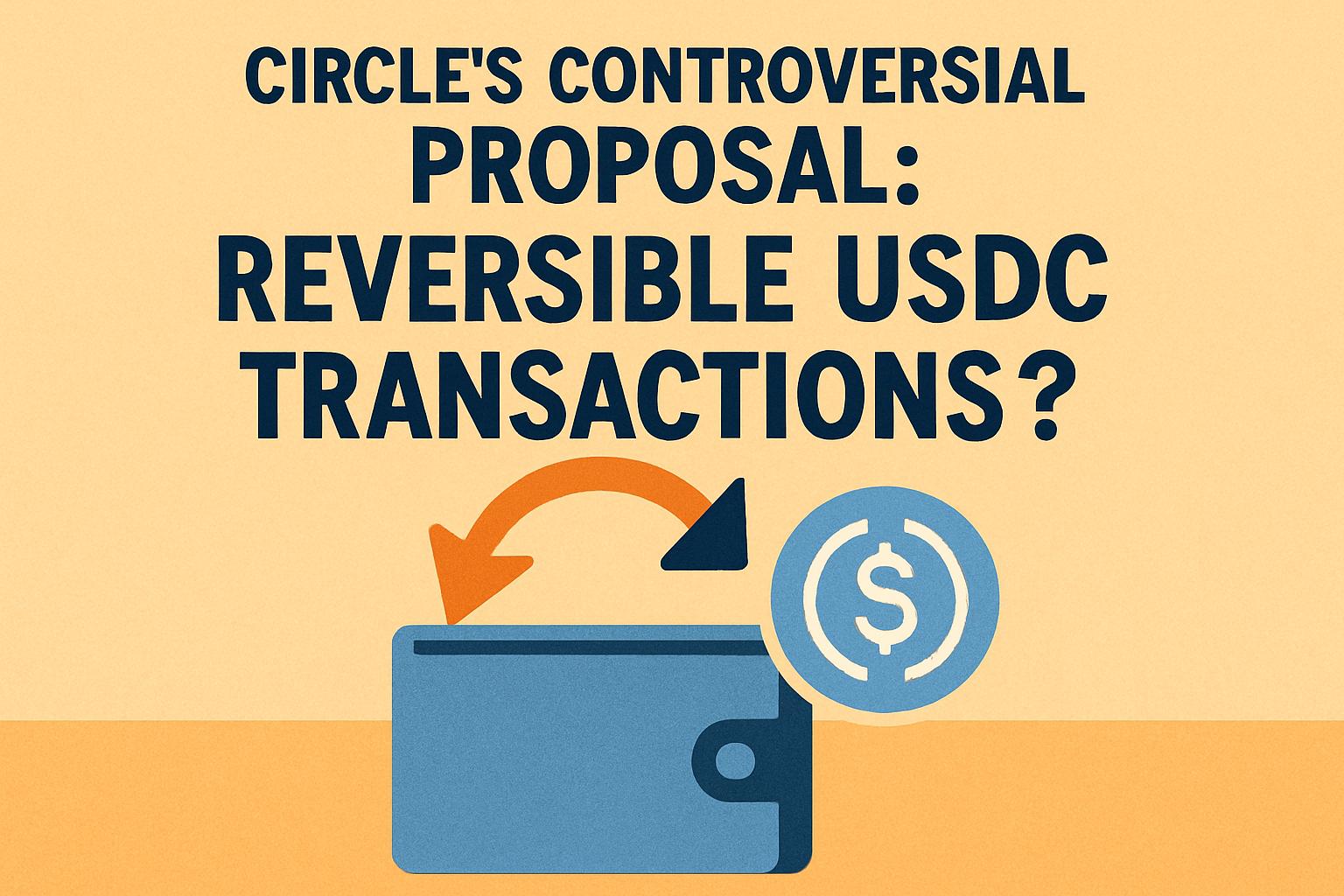The cryptocurrency world stands at the crossroads of innovation and fundamental principles. Recently, Circle, the issuer of the popular stablecoin USDC, revealed its consideration of introducing reversible transactions, sparking a heated debate across the decentralized community.
A Paradigm Shift for Stablecoin Transactions
Circle is scrutinizing a pioneering yet contentious proposition: Should USDC transactions be reversible under certain conditions? Heath Tarbert, Circle’s president, mentioned in an interview with the Financial Times that they are exploring the possibility of making transactions reversible, a move that might disrupt the core tenets of cryptocurrency, particularly settlement finality, which dictates that once confirmed, a transaction is immutable.
Traditional Finance Meets Cryptocurrency: Is Refundability the Future?
In traditional finance, disputes and fraudulent transactions can often be rectified through banks or credit card companies. Tarbert believes that enabling a similar refund mechanism for stablecoins could potentially enhance their adoption in mainstream consumer payments and international transactions.
This proposal, however, challenges the long-standing value of decentralization in cryptocurrency, where purists argue that blockchain transactions should remain irreversible, and introducing any form of reversibility would equate to centralizing arbitration, thus contradicting the decentralized ethos.
The Growing Influence of Stablecoins in the Market
Stablecoins have cemented their role within the crypto industry as hedging instruments tied to fiat currencies like the US dollar, protecting users from the volatility of assets such as Bitcoin (BTC) and Ethereum (ETH). They have also emerged as viable options for international payments.
According to CoinGecko, the stablecoin market valuation stands approximately at $300 billion, with Circle’s USDC holding a significant portion at $74 billion. Meanwhile, Tether (USDT) dominates with a $173 billion market cap.
Circle’s Expansion and the Mainstreaming of Stablecoins
Following its IPO in June 2025, Circle has been vigorously promoting the use of stablecoins within the U.S. market and further enhancing regulatory compliance. While the company seeks to bolster transaction security, it is also cautious not to compromise the ‘instant settlement’ advantage that cryptocurrencies provide.
“We need transaction finality,” Tarbert noted, highlighting the inherent tension between instantaneous transfers and the security of irrevocable transactions.
Decentralization vs. User Protection: Where Does the Future Lie?
Circle’s suggestion has ignited discussions about the trajectory of cryptocurrency: should it remain staunchly decentralized and immutable, or evolve towards compatibility with traditional finance? If Circle implements reversible transactions, it might necessitate some centralized arbitration mechanism, like a third party or Circle themselves determining which transactions could be reversed. This presents a formidable challenge to the pursuit of absolute decentralization in crypto ideology.
While Circle’s timeline for a concrete proposal remains undisclosed, the mere discussion underscores that stablecoins are no longer mere crypto hedges. Instead, they could bridge the gap to mainstream finance, providing they can harmonize decentralization with user assurance.

![[News] Bitcoin at a Turning Point? 10x Research Signals a Bullish Macro Shift Ahead](https://cryptoexplores.com/wp-content/uploads/2025/06/new20250616.jpg)
![[News] Binance Lists $HOME, the Gas-Free, Bridge-Free All-in-One DeFi App](https://cryptoexplores.com/wp-content/uploads/2025/06/news20250617.jpg)